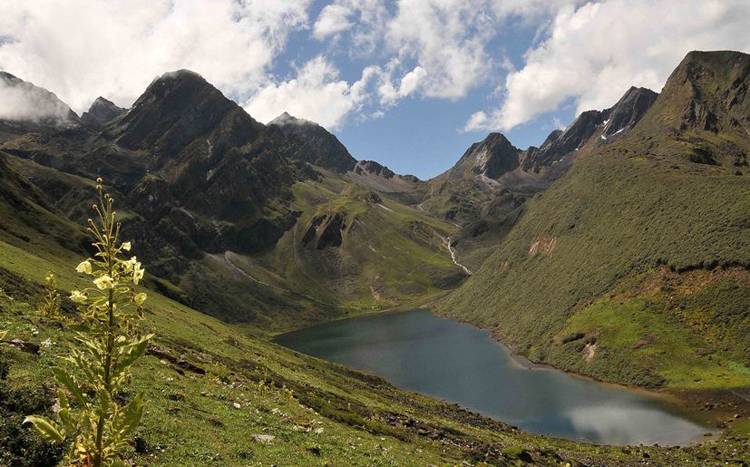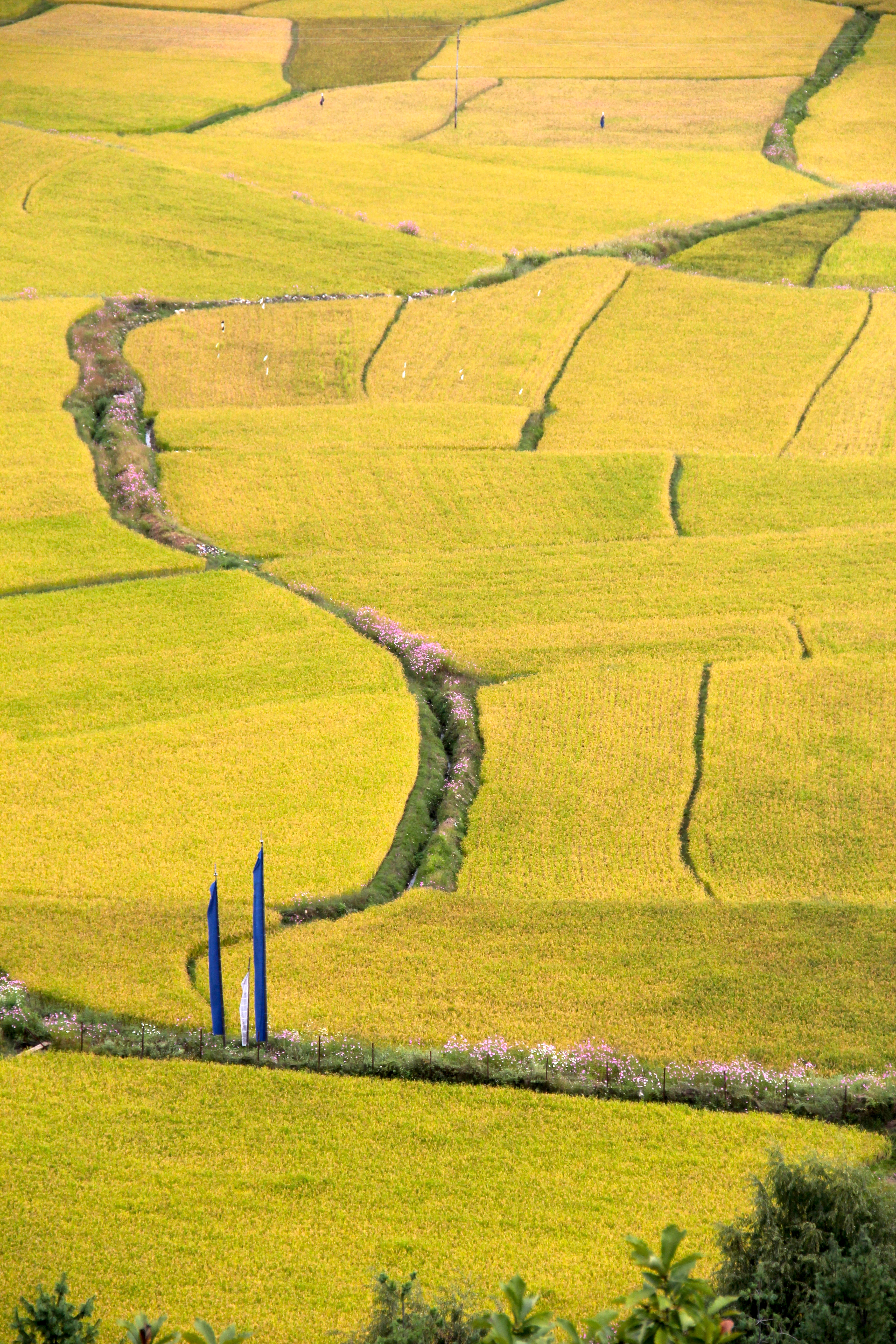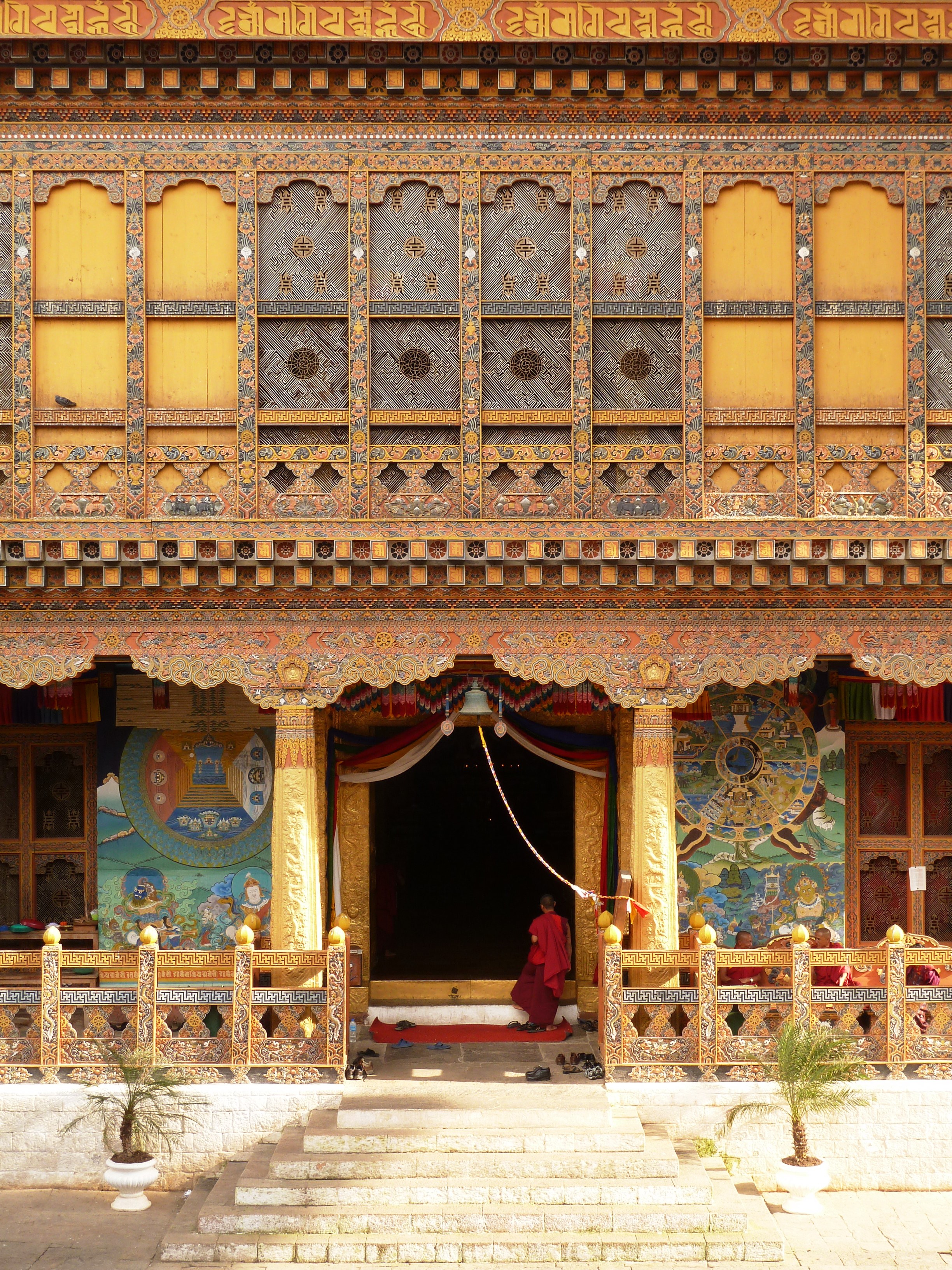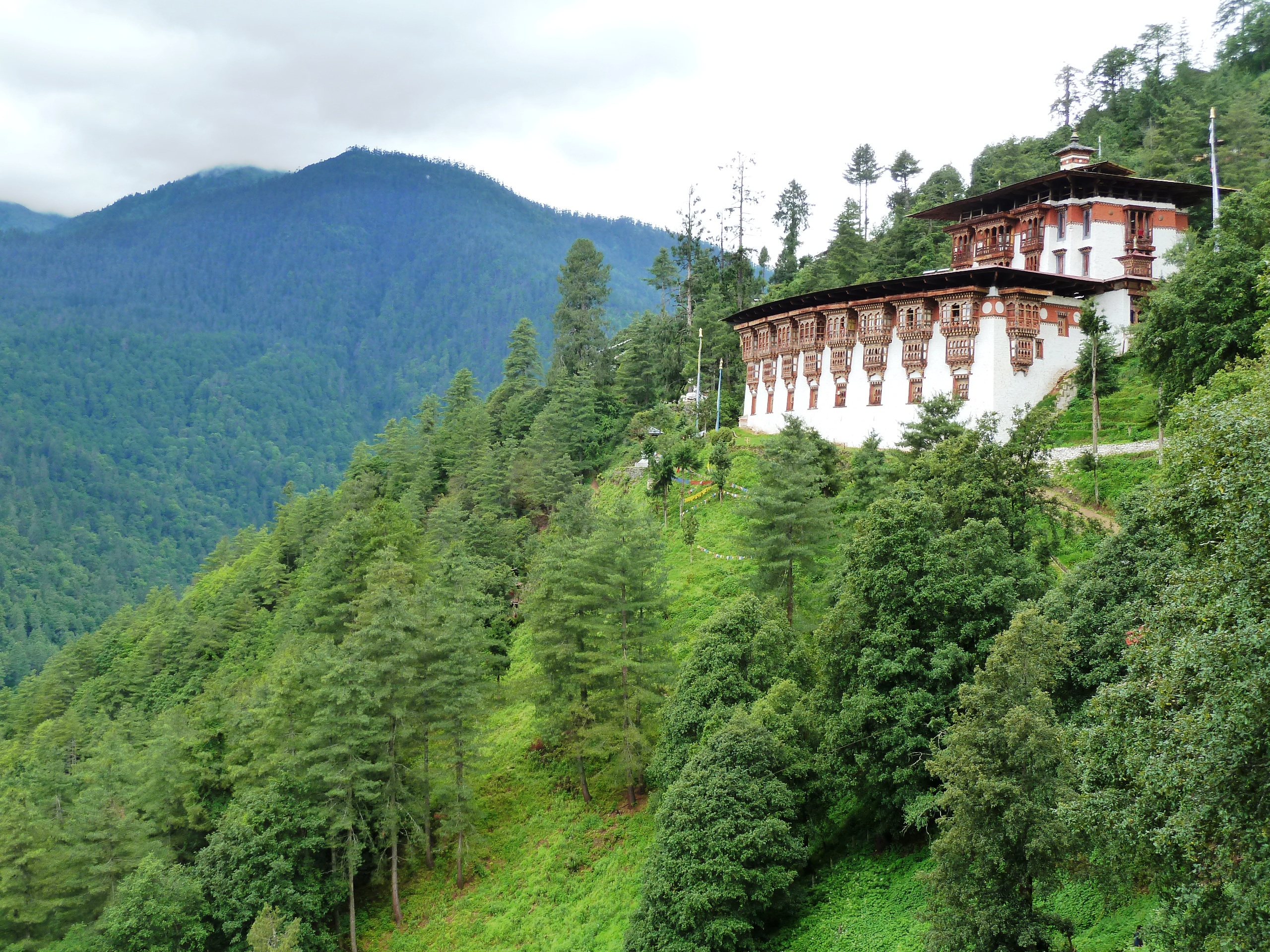How many people in the world would like to discover the land where the mythical Shangri-La could have been? The place of eternal youth and happiness. A territory full of legends that many think could be the present kingdom of Bhutan.

Chortens or stupas are architectural elements that representing the enlightened mind of Buddha and often they contain relics or sacred texts inside
To enter the country, the first requirement is to hire a tour with a local agency. This tour has several prices, and we can say that the cost is from $ 200 per person and per night. An amount applied for groups of 3 people or more in the low season months.
The government indicates this amount and its use. Because 65 of those dollars are a rate of poverty elimination and are used to finance both health and education. While the other $ 135 cover hotel expenses, full board, the English guide, vehicle, all transfers and all visits. That means, all this is included in that price. Only by hiring a tour can the local agency obtain the visa.
It is not easy to be one of the lucky ones who gets flights to get to Bhutan at certain times of year especially when the Festivals of Paro take place, which are held between March and April and the Timphu Festivals halfway between September and October which unites the exterior with Bhutanese.

Religious or “Tshechus” festivals are one of the most important events for Bhutanese and there attend the inhabitants of the towns, not only for its religious component but also as an opportunity to socialize and visit the family
There are only two airlines that join the Paro Airport with the rest of the world and only operate from India, Nepal, Bangladesh, Thailand and Singapore. Both airlines make available to travelers 5 airplanes, all of them small as none exceeds the capacity of 100 seats. While the size of the ships is due to the peculiar conditions of Paro airport, a place surrounded by mountains, where you cannot land any airplane and pilots have to be specially trained crew.
That is the main reason why the paradisiacal territory of Bhutan receives surprisingly only 100,000 visitors from around the world over a year and only 400 are Spanish.
In short, once we get the flight, pay our tour and chose the best time of year for our visit, we can enjoy Bhutan, without a doubt, one of the most exclusive and unique destinations in the world.

Hotel ZhiwaLing is unique for its traditional architecture and location overlooking the Tiger’s Nest Monastery
The attractions of Bhutan
If we see pictures of this country situated in the Himalayas we have an idea that there awaits us beautiful and shocking landscapes at the same time.
A permanently snow-capped mountains with peaks that can exceed 7,000 meters. And some valleys littered with rice fields, where are the main Bhutanese populations.
In larger populations, which typically range between 1,000 and 2,000 inhabitants, a dzong stands. A large building in which monks and officials meet, because here the religious and civil power are closely linked.
These dzong are real gems of the heritage of Bhutan, though there are some that stand out above the rest. For example, in Punakka, the ancient capital, is situated the most beautiful of them, located at the confluence of the Mother (Mo Chou) and Father (Pho Chou) rivers.
Most of the Dzongs were built in the seventeenth century to ward off invasion attempts by the 5th Dalai Lama from Tibet.
Instead, much further away from urban centers there are the Buddhist monasteries. It takes time to reach them, and that is no coincidence. Their beliefs tell them “if you try hard, you purify”. That is, visiting places like the incredible Taktshang Monastery, the traveler in addition to be amazed with its dizzying location hanging on the mountain, also gets cleaned spiritually after the ascension.
Clearly, landscapes, cities, heritage and spirituality of Bhutan are sufficient reasons to make this trip. But the vast majority of tourists are attracted for one reason, the best tourist slogan that one can imagine: In Bhutan happiness is more valued than the economy.
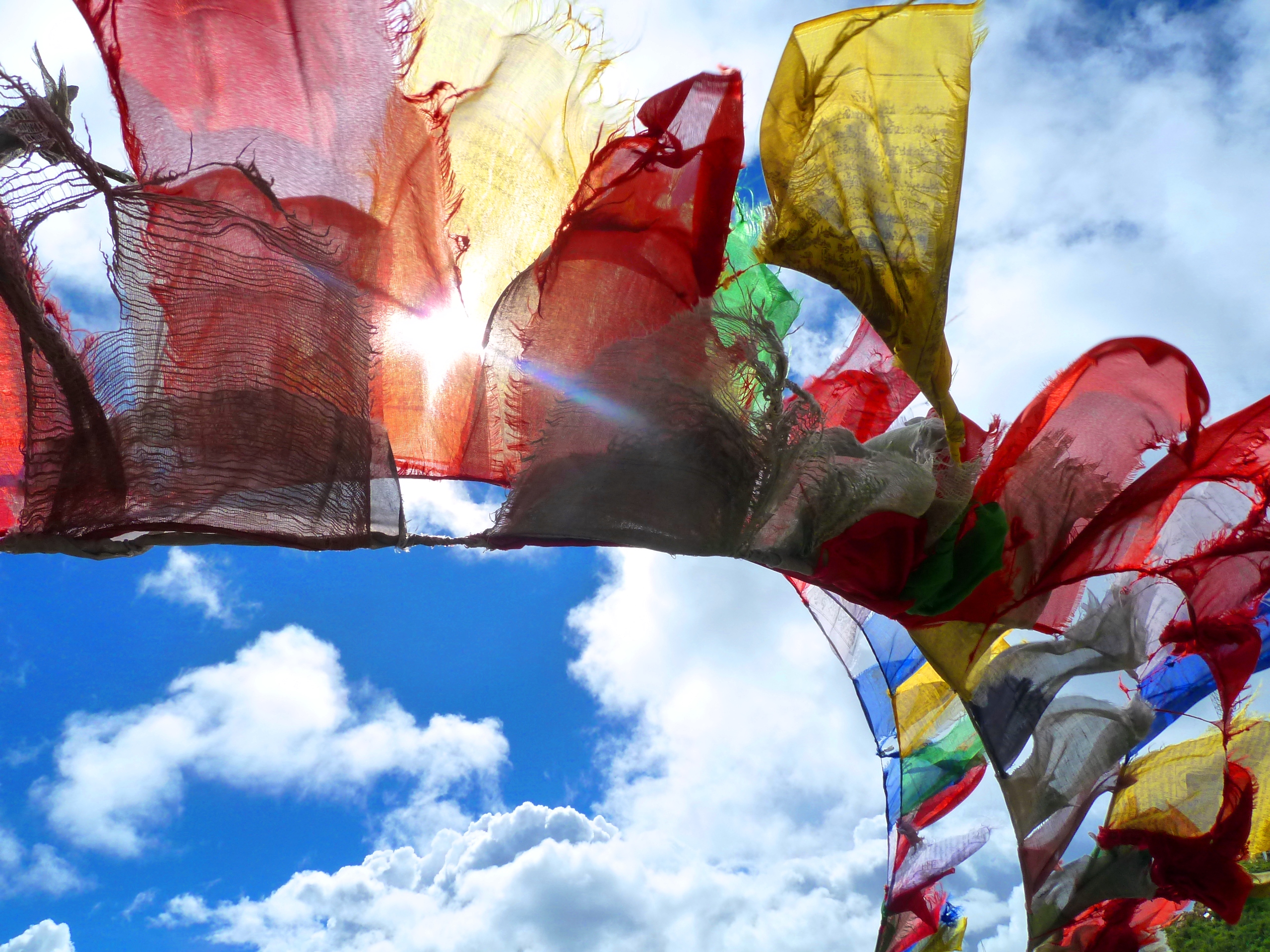
Buddhist prayer flags blowing in the wind that expand the prayers of peace and compassion for the world
Prayer flags are also characteristic elements of all Buddhist cultures. The colors symbolize the 5 elements (sky/space, air, fire, water and earth). Usually they are put in places where there is wind; the wind when blows and moves them makes the prayers of peace and compassion that have engraved to be spread throughout the world.
The Gross National Happiness Index in Bhutan
Yes. While in other countries pay attention to monetary values such as GDP, here they pay great attention to the rate of Gross National Happiness. And for this the citizens make questionnaires to nearly 200 questions on 9 different topics.
They are asked about their psychological well-being, education, culture, health, how they distribute their time, about their houses, social relations, ecology and also on the quality of their government.
The purpose of assessing the level of happiness of the people is that there they are convinced that the happiest the people are, the easier it will be the growth and development of the country. But not a growth at any price.
Four elements should guide it. There has to be a sustainable and equitable development, cultural values have to be preserved, as well as the environment. And of course, a good governance has to be established.
Time changes in Bhutan
That government is now based on a system of parliamentary monarchy, although until 2000 was an absolutist regime. The amazing thing is that it was the former monarch who promoted this change, and the Bhutanese population adores him more than his son, who reigns today.
Bhutan gradually enters the twenty-first century. We must remember that until 1999 the television and Internet were banned, or that until 2008 there was not a constitution. Well, it might be many changes in a short space of time.
The best place to see this is the capital, Timphu. A city where around 75,000 people live. It is one of the few world capitals, perhaps the only, which does not have a single traffic light, but as time goes by there are more and more stores of western air and the people walk down the street with identical phones to those of tourists.
Mobile, shops, tourists, internet, television, all are a constant bombardment that talks about what lies beyond the mountains and valleys of Bhutan. Hence, its famous happiness index reflects increasingly lower data among the young population. A youth who yearns different things from what these landscapes, traditions and beliefs offer.
Meanwhile, Westerners that have all those things desired by young Bhutanese are crazy about traveling there to seek their piece of happiness as they are struck by its imposing mountains or at the same time that they reach that inner peace that cannot find in their busy day.
In short, happiness in Bhutan, as in any other part of the globe, is a volatile state, completely subjective, difficult to describe and above all no one knows where to find it. But of course, from Horse we encourage you to travel and look for it.
FACTS YOU DO NOT KNOW ABOUT BHUTAN
1-Thimphu is the only world capital without traffic lights (in fact there are no traffic lights across the country).
2-Most people’s names are valid for both men and women. New-borns are taken to a monastery where they choose their name “randomly” extracting a piece of paper of a container with different names.
3-Bhutan is the only country that has a 100% ecological agriculture.
4- The 72% of the country is forest and the constitution prohibits trees from being cut. When they need wood, they buy it in India.
5- Health and education is free for locals and for tourists who visit them.
6- The Fourth King, who is attributed the concept of Gross National Happiness, is married to four sisters, the four Queens Mother.
7-Alcohol, such as whiskey, is produced by the army.
8-Plastic bags are not allowed.
9-Smoking is forbidden.
10-Chili is considered a vegetable and not a condiment. The national dish of Bhutan is Ema Datshi: “ema” means “chili” and “datshi” means “cheese” that is, its two ingredients. In general, cuisine is quite spicy.
11- All buildings with a red stripe at the top are Buddhist monasteries or temples.
PRACTICAL INFORMATION
To reach Bhutan you need to fly first to one of the Asian cities with connection by air to Paro Airport (although road access is also possible from India). Kathmandu in Nepal is, for reasons related to flight connections and visa’s ease, the most widely used city for travelers going from Europe. It is important to remember that normally the local agency will manage our flight from Kathmandu to Bhutan (not the flight from Europe to Nepal) and the government forces to hire a full tour with a local operator before providing the visa. Without this visa provided by the local tour operator we will not be allowed to get into the plane. We also have to remember that there is no daily flights and therefore it is good to contact the local agency before buying international flights.
Although you can organize stays from 2 nights, the ideal trip is 7 nights so you can go a little more in the country and discover its landscapes and its people.
If you want to go hiking, you can add some extra night to make for example the Bumdra Trek, a relatively simple route that includes 1 night in a luxury tent and culminates in what is undoubtedly the best known monument in Bhutan; the Tiger’s Nest Monastery. For those who do not want to go hiking the Monastery of Tiger’s Nest is included on all tours, but to access it we have to walk for a couple of hours (although it is possible to make part of the journey on the back of a mule).
For the most adventurous, there are also trekking routes, from the popular Druk Path (5 nights) to one of the toughest treks in the world, the Snowman Trek with a duration of 28 days.
CONTACT DATA
Bhutan Exclusive
The only local agency based in Bhutan specialized in customized trips for Spanish-speaking travelers.
Translated by Raquel Sanchez




